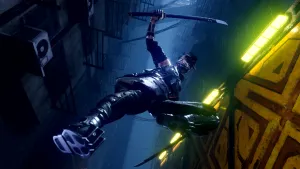The E3 2017 VR Roundup
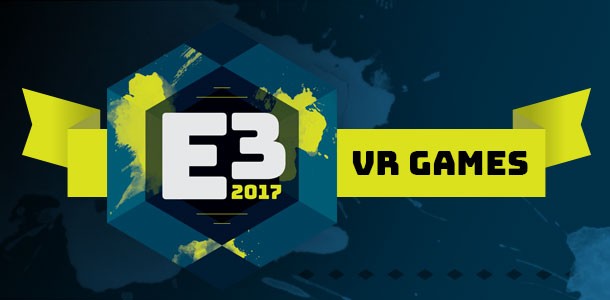
With the Oculus Rift, HTC Vive, and PSVR all still trying to establish a strong foundation for virtual reality, E3 2017 is a critical juncture for the fledgling technology. Can developers offer compelling, long-form experiences that can justify the steep price tag? We won't know until these games get closer to release, but there were a few standout games at the annual conference. Here are our top picks for virtual reality games to keep an eye on moving forward. We'll update the story with additional selections as we new standouts.

Arktika.1
Platform: Rift
Release: 2017
The first VR game from Metro series developer 4A Games is one shooter fans should keep an eye on. The new slice of gameplay we checked out started with some practice shots at the gun range with various weapons. Each gun has a unique feel and reload method, from standard pistols to laser rounds that can heat seek marked enemies hiding behind cover, and the Touch controls are fluid. Once I found the two weapons I was most comfortable with, the demo transitioned to an indoors mission that involved some light puzzle solving to open doors and continue to move through the facility. Arktika uses teleportation for locomotion, so you just beam from one spot to another of the areas highlighted in the world. This cuts down the immersion considerably, making it feel more like a shooting gallery than an atmospheric experience. That's a shame because the graphics are some of the best I've seen in VR to date, and 4A Games excels at creating moody post-apocalptic settings. –Matt Bertz
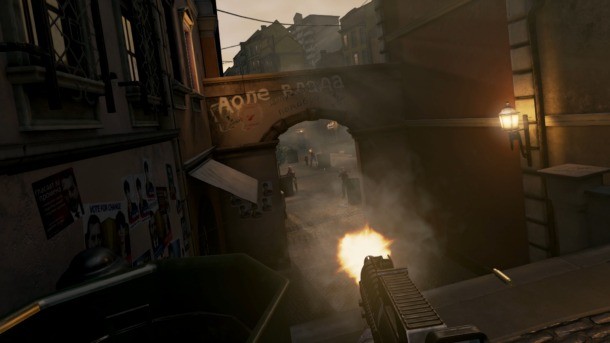
Bravo Team
Platform: PSVR
Release: 2017
Alpha and Charlie Teams are down, and you are the only special operatives who still alive who can escort the president out of a city descending into chaos and war. That’s the setup behind Until Dawn developer Supermassive’s next VR project, in which one or two players grab their rifles and progress through an increasingly dangerous field of urban warfare. The PSVR Aim rifle does a good job of detecting where you’re aiming, and offering intuitive controls that let you run between different cover points as you gun down the bad guys. The game is especially engaging when played with a buddy, as you can do things like flank enemies, or lay down suppressing fire to let your teammate sprint to the next cover point. Bravo Team feels a lot like a next-generation variation of the old classic light gun arcade games, and we're curious if the experience can hold up for a full game. The brief demo on offer certainly suggests the potential for some compelling battles. –Matt Miller
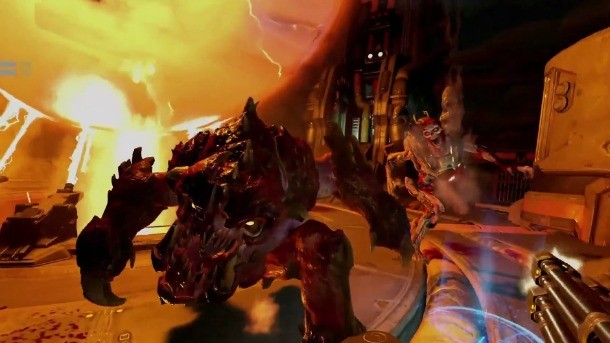
Doom VFR
Platform: PSVR, Vive
Release: 2017
Bethesda and id Software showed off a new, tweaked version of Doom customized specifically for virtual reality at their E3 showcase. Given the breakneck speed of combat in the fantastic 2016 reboot, I was curious to see how id could capture the spirit of that experience. After a 10-minute demo, it worked better than I expected. You have two methods of movement, a quick hop teleport in any direction you push, or a targeted teleport you can use by holding in one of the Vive trackpads. Once you get the hang of this movement mechanic, I was zipping around the demons pumping them full of lead. Glory kills work by teleporting directly onto the enemies when they start blinking. You can get turned around pretty easily when you are jumping around the environments, but I'm sure with some more practice I could avoid that. Just make sure you brace yourself before stepping onto a jump pad; that was the only portion of the demo that made me feel woozy. –Matt Bertz
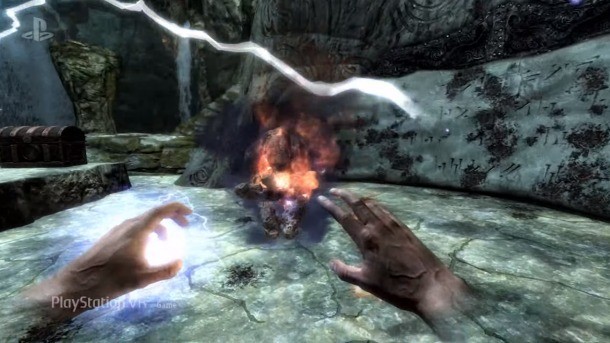
The Elder Scrolls V: Skyrim VR
Platform: PSVR
Release: 2017
Considering the base infrastructure similarities between Fallout and Elder Scrolls games, it's no surprise Bethesda Game Studios is bringing both to VR platforms. We got a brief taste of how the world of Tamriel translates to virtual reality using Move controllers. Given the focus on melee combat and spellcasting, expect to have your hands in motion frequently when using these controllers. Casting a spell is as easy as pointing toward your target and holding down the trigger. A subtle swipe of the other move controller triggers sword swings. The bow and arrow were available for use as well, and it required you to awkwardly mimic notching an arrow and letting it fly. The teleportation movement mechanic is the biggest question mark facing Skyrim VR, as it was easy to get turned around while exploring dungeons or engaging enemies. Look for Skyrim to come to other VR platforms as well at a later date. –Matt Bertz

Fallout 4: VR
Platform: Vive
Release: October
I got my first chance to check out Fallout 4 in VR since last E3 at the Bethesda E3 booth, and it's come a long way. With a Pip Boy in one hand and a rifle in the other, I engaged in a segment of the Out of Time main story mission. Using the trackpad for movement, you can move as you would with an analog stick if you can stomach the slight simulation sickness. If this kind of locomotion is too high impact, you can opt for a teleportation movement mechanic instead. The first enemy engagement I encounter is a pack of ghouls and raiders, which I gun down effortlessly. When I move into the city and a Deathclaw joins the fray, I opt to slow combat down with the VATS system. This allows me to concentrate fire on a specific body part. I dump a full clip of fusion cells into its skull and scavenge my rewards.
I only got 10 minutes with game, which isn't enough time to familiarize myself with the nuances of the new control mechanics. This is still the biggest question hanging over the port. That said, it appears Bethesda has translated almost all the major components of the console/PC game, which should set it apart from the overwhelming number of VR games that feel more like proof of concept demos. –Matt Bertz
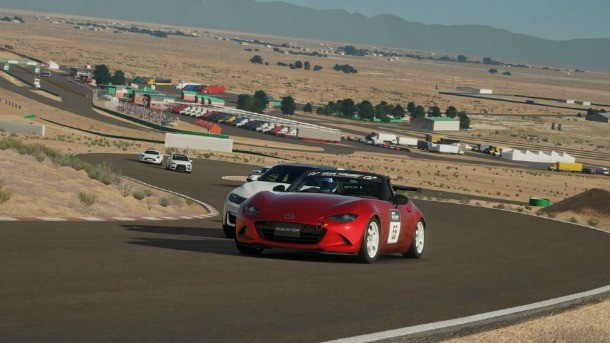
GT Sport
Platform: PSVR
Release: Fall
PlayStation VR is a natural fit for Polyphony Digital's racer – not because it's a first-party title, but because being able to expand your vision via VR makes a lot of sense when you're in the cockpit of a car. I really liked being able to look into a turn to see the corner's exit and beyond, and in cockpit view in particular, it's cool to have your view while looking out the windshield change depending on the pitch of the car (like going up a hill). My one problem with GT Sport is that there's a definite drop-off in graphics from the main game into the VR experience, which is in its own mode. This happens to all VR titles, but given the high bar set by Polyphony – and it is high – you definitely notice it. –Matthew Kato
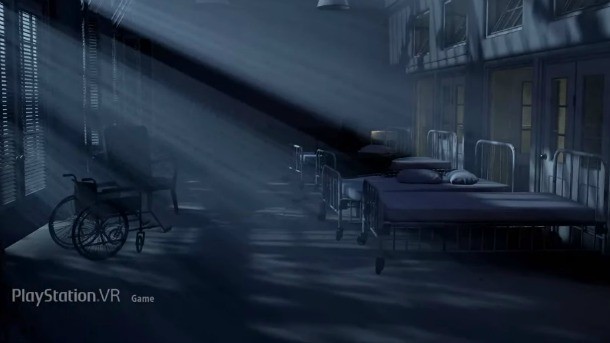
The Inpatient
Platform: PSVR
Release: TBA
Supermassive Games, the makers of the decisions-based horror game Until Dawn, unveiled that they are now working on a VR title set in the same universe. This isn't Supermassive's first VR game; the studio released another Until Dawn themed VR game, Rush of Blood, last year. Billed as a psychological thriller, The Inpatient takes place in Until Dawn's sanitarium, but many years prior to the events of the first game. You play as a patient with amnesia, who wakes up in the mental asylum strapped to a chair and being interrogated by a bearded man who presumably is a doctor. He asks you specific questions that trigger your memory, but it's not enough to comprehend why you're here. Depending on whether you are defiant or compliant, your choices lead to different consequences. For example, by showing anger, I was then subdued with a needle to be calmed down. The demo went back and forth between present day, flashbacks, and dream sequences, and had more of a spooky atmosphere than one that was outright terrifying. Nonetheless, I enjoyed the immersive experience and look forward to learning more. –Elise Favis
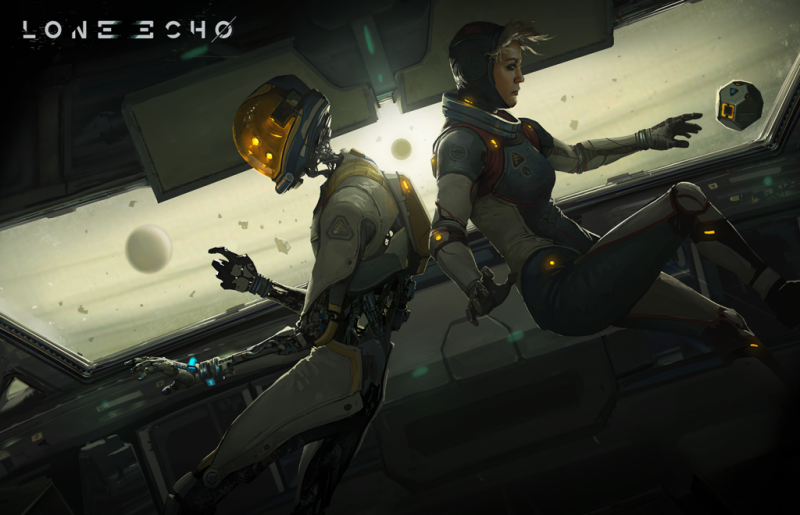
Lone Echo
Platform: Rift
Release: July 20
The Order developers Ready At Dawn are prepping their Ender's Game style arena experience Lone Echo for release on July 20. The five-on-five sport takes place in a zero-G arena, and teams vie for control of a disc that must be shot through a goal to score. Getting the hang of thrusting yourself from solid emplacements and using small suit thrusters to navigate the area takes some getting used to, but the game gets your competitive blood boiling. Coordination on offense and defense is key to success. The multiplayer is free to Rift owners, but the studio is also releasing a story-centric single-player experience for $39.99 at the same time. –Matt Bertz
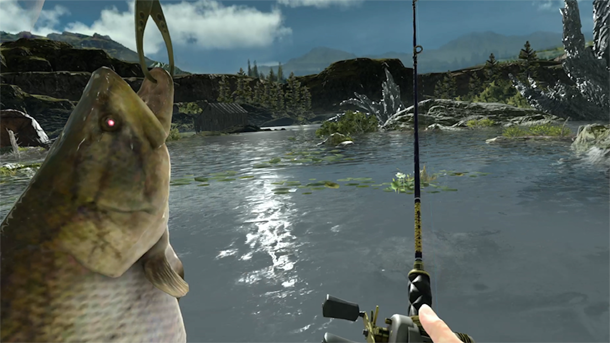
Monster of the Deep: Final Fantasy XV
Platform: PSVR
Release: September
Anyone who has played Final Fantasy XV knows that Noctis loves fishing, and PSVR owners will be able to share that passion with him later this year. Virtual reality is a natural way to experience the low-impact action this sport, and Monster of the Deep: Final Fantasy XV captures it well. My demo involved using the Move controllers to cast a line, reel in fish, lead them left and right, and eventually yank fish out of the water and place them in a net. Of course, you aren't just dangling your feet off the end of the dock the whole time; Monster of the Deep also has boss fights against huge fish. As I faced one, I used a crossbow to deplete its health during the brief windows it surfaced, and once the bar was empty, I caught it using the standard mechanics. It may not be the deepest or most involved VR title, but it is a fun addition to a universe that many players already enjoy. –Joe Juba

Moss
Platform: PSVR
Release: Fall
The founding developers of new studio Polyarc may have action-oriented blockbusters like Destiny and Halo on their resumes, but their first project strikes in a drastically different direction. Moss is a "couch-scale" action adventure that starts by cracking the spine of a magical book. Once you turn the page you are transported into the world of Moss. Once you enter this lush land, you realize the world reacts to your presence, reaching out with a DualShock 4 controller (no Move support yet) causes the surrounding vegetation to rustle, and looking into the pool of water below you can see your masked reflection. You are a character in the world who guides an adorable mouse named Quill through platforming, puzzle, and light combat sequences. With only two buttons to worry about – one for jumping, and another for combat – this should be an easy game for anyone to play. Given you have an anchored perspective for each sequence, this is a very low impact virtual reality experience. My brief experience playing the game involved some environmental puzzles I had to solve to create a path forward for Quill, and easy melee combat against some agitated beetles. Polyarc plans to release the first chapter of the game this fall, and if it's well received they hope to continue the tales of this magical world. Right now the game is only being developed for PSVR, but don't be surprised if it eventually migrates to Vive, Rift, or both. –Matt Bertz
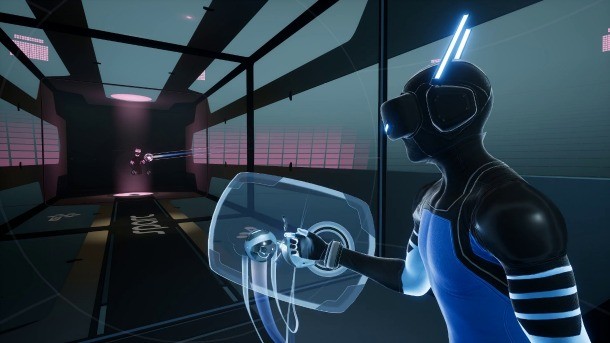
Sparc
Platform: PSVR
Release: TBA
Most players know CCP games for their work on Eve Online, but the developer is also preparing to release a VR project called Sparc. Billed as a V-Sport, this virtual experience is played competitively by two players. The mode I played had a remarkable similarity to the classic scene from the original Tron movie, where two opponents fling discs back and forth in an arena. Instead of discs, Sparc gives each player a ball. Hold onto the ball, and it acts as a shield with which you can block the enemy’s incoming projectile. If you throw your ball, you’re left mostly defenseless as your foe sends their ball careening your way, bouncing off walls, ceiling, and floor. You can block with wristguards (on the novice setting) or actually move your real-world body out of the way to dodge. The game does an admirable job of detecting the tracectory and momentum of your throw. The experience feels like a combination of dodge ball and racquetball, but in a glowing VR setting. The game is simple but immediately engaging, and it looks like it will be a fun way for two friends who both own PSVR units to get the blood pumping. –Matt Miller
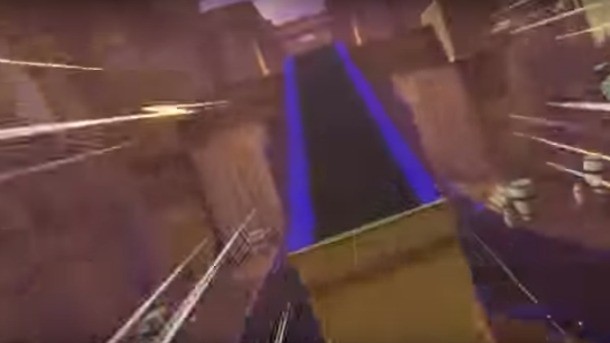
Sprint Vector
Platform: Vive
Release: 2017
Survios is opting for the most active and frantic VR motion controls I’ve yet seen attempted in VR, and the racing game that results is certainly a unique entry in the still burgeoning VR library. Sprint Vector is as much a workout as a competitive head-to-head racing game for up to eight players. Each player uses the motion controller in each hand like cross-country ski poles, pushing off in wide swinging arm motions to propel themselves forward along the in-game ground. To change directions, just stare in the direction of your new trajectory, and push off in that direction. At walls, you can reach up to handholds and bodily pull yourselves up the vertical surface. The sense of genuine motion is intense. The current motion controls really work up a sweat, and the long arm swings don’t feel totally natural quite yet, but the developer is still iterating on the concept, and few VR games provide such a great sense of movement. –Matt Miller

Star Child
Platform: PSVR
Release: TBA
Playable on a standard screen or using a PSVR headset, Playful’s new sidescroller is a sci-fi cinematic adventure. Our demo was in VR, and the environment immediately caught the eye, offering an impressive depth of field, with swaying objects in the foreground and the background, lending the sense that you were watching scenes unfold from within the setting. Even leaning forward zoomed in on the action, offering a better view of the female lead as she leapt and ran her way across an alien landscape. The brief demo showed off some simple puzzles in which the main character needed to connect some battery lines to open progression routes, and as the demo concluded, she met up with a titanic humanoid robot that first protected her and then lifted her up from the ground. Playful isn’t talking much about the primary gameplay loop, or about the mystery of the giant robot. Nonetheless, the visual presentation in VR and the beautifully drawn game world is attention-grabbing, leaving us ready to see more. –Matt Miller
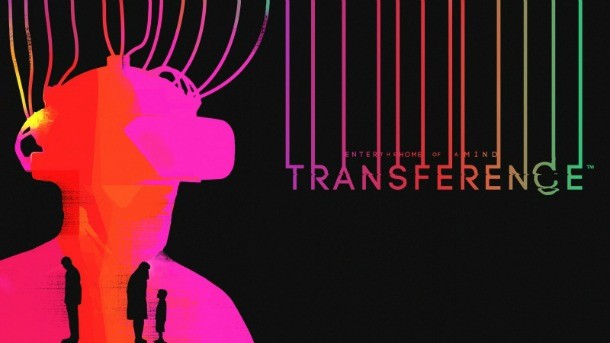
Transference
Platform: PSVR, Rift, Vive
Release: Spring
Transference is a partnership between Elijah Wood's SpectreVision production company and Ubisoft, and the VR experience isn't really a horror title, but rather a family mystery and the psychological exploration of PTSD. In fact, the slice I played wasn't part of the game itself, but rather an example of the kind of mood and situations you may be put in. Some of the gameplay encompassed traditional puzzles, but the real hook was the unsettling mindset that it conveyed - one that was rooted in reality, but could become unhinged fast. The final game explores a different family than the one in the demo, and this story backdrop, when melded with the demo's mood and psychological themes, could produce a powerful VR reaction. –Matthew Kato

Get the Game Informer Print Edition!
Explore your favorite games in premium print format, delivered to your door.
- 10 issues per year
- Only $4.80 per issue
- Full digital magazine archive access
- Since 1991

